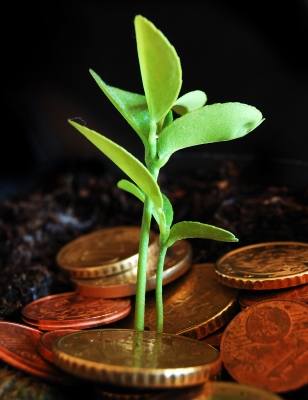
Despite the crippling effects of the recent economic slowdown on many industries, organic agriculture more than sustained itself – it actually grew.
In 2009, 37.2 million hectares worldwide were farmed organically, a 5.7% increase from 2008 and 150% increase since 2000, according to policy analysts at the Worldwatch Institute.
The Inte rnational Federation of Organic Agriculture Movements (IFOAM) defines organic agriculture as: "a production system that sustains the health of soils, ecosystems and people. It relies on ecological processes, biodiversity and cycles adapted to local conditions, rather than the use of inputs with adverse effects. Organic agriculture combines tradition, innovation and science to benefit the shared environment."
Although organic agriculture is practiced around the world, certified organic agriculture tends to be concentrated in wealthier countries.
The Group of 20 (G20), comprising both developing and industrialized countries, is home to 89% of certified organic acreage. Nongovernmental organizations, such as Slow Food International and ACDI/VOCA are working with farmers to promote organic agriculture in developing countries as a means of bettering livelihoods and rejuvenating the land.
In western Tanzania, organic agroforestry practices have rehabilitated some 350,000 hectares of desertified land over the past 20 years. And in Ethiopia, coffee farmers are learning how to protect wild coffee plants, fertilize them using organic compost, and process them in a manner that retains the quality of the crop, without damaging the environment.
Before 2000, organic agriculture grew dramatically. Since then it's been growing, but more slowly. The price premium of organic products still impedes large-scale expansion, despite the potential environmental, ethical, and health benefits these products provide.
Other challenges include a lack of worldwide organic standards and equivalency agreements. An equivalency agreement between two countries acknowledges each other's organic standards and allows for the smooth flow of certified organic goods between the two countries.
The Norwegian Agency for Development Cooperation finances the Global Organic Market Access (GOMA) project, which facilitates the trade of organic products by establishing organic standards and negotiating equivalency agreements, but more progress is needed in this area.
Rising farmland prices are putting a further strain on organic agriculture. Research by the International Food Policy Research Institute shows that foreign investors have spent up to $20-30 billion on land purchases since 2006. These price hikes are threatening global food security and are especially detrimental to small-scale farmers' ability to enter organic agriculture.
Despite all these challenges, organic agriculture holds untapped potential for helping farmers and consumers alike build resilience to food price shocks, climate change, and water scarcity. By turning to organic agroforestry and switching from synthetic to organic fertilizers, farmers are not only raising their incomes by reducing input costs, but also adapting to the effects of climate change and helping to protect the environment.
"In order to keep feeding humanity for generations to come, and to feed people better, farming must reinforce conservation goals by adding diversity to the food chain and by healing ecosystems," says Danielle Nierenberg, Worldwatch senior researcher and co-director of the Institute's Nourishing the Planet project.
Worldwatch's Nourishing the Planet project has traveled to 25 countries across sub-Saharan Africa, shining a spotlight on communities that serve as models for sustainable future. The project is unearthing innovations in agriculture that can help alleviate hunger and poverty while also protecting the environment. These innovations are elaborated in the recently released report State of the World 2011: Innovations that Nourish the Planet.
Article courtesy of SustainableBusiness.com

